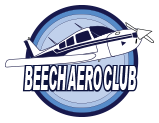Just to emphasize an aspect of what Paul is saying. If you fly IFR, even if only light IFR, you can run an air pump to failure ONLY if you have at least an electric backup attitude indicator; and preferably a standby vacuum system as well. Air pump failure in IMC has a bad habit of being deadly, even with experienced pilots.
Mike Busch is generally correct in that many parts can be operated to failure, or near failure. Other than what the FAA mandates (especially under Part 23, like the Cirrus and Commander, which have a boatload of mandatory replacement items/times), under Part 91 (and CAR 3) we have a lot of latitude.
Of course, the risk and consequential cost in this approach varies wildly depending on the item and the knowledge base of the operator. There is no point in changing a cylinder because it has reached 1,000 hours; or has had one low compression reading due to ring leakage. And almost no one changes the Sierra-Duchess gear pump brushes every 1,000 hours, as is specified. You can wait until the pump fails, on the assumption that the emergency extension will be faultless (because it almost always is).
Running an Attitude Indicator until it fails to erect in a reasonable time is one thing. Ignoring the bearing noise and slow attitude correction, and running it until it rolls over in IMC, and you roll into the ground, is something else. Or how about a badly worn tire. It would be pretty dumb to wait until it blows on landing, and an off-runway excursion requires airframe, engine, and prop repair.
To sum up, you have to have the judgment to distinguish between repairs that can be deferred and parts that can be run to failure, versus those that should not be left to chance. And it is also true that there is even a risk in changing a part. Most parts have some percentage of infant mortality. And the simple fact that work was done on the plane creates some added exposure to failure; many problems occur shortly after an Annual Inspection. I do think that far too many parts get changed unnecessarily, due to unwarranted concern or simple ignorance. I would bet that 75% of cylinder replacements related to low compression are probably unwarranted, when the leakage does not involve the valves.
Please understand that I am in no way trying to contravene something Mike Busch teaches in his seminar. I have attended his training, and it is excellent. He also has much more general maintenance experience than I do, and has earned recognition for it. I am just suggesting that you have to understand the nuances in the general principle. You cannot afford to just operate everything until it fails. For those who are not mechanically inclined, or who won't recognize early warning signs, time-based replacement is wise (when such guidance is available). That's why the FAA mandates it in revenue service (or requires backups).
I personally prefer guidance that is based on field experience. For example, manufacturers say standard hoses should be changed every five years. Seems silly to me; they are often still in excellent shape (inside and outside) after as much as ten or fifteen years. But should you run your 35-40 year old original hoses until a cooler line bursts in flight? Or a brake line lets go while you are making an emergency stop, or fighting a crosswind on roll-out? Air pump manufacturers suggest a MTTR of 500 hours. My experience has been that 1,000 hours is safe on most new air pumps. Even with standby vacuum and an electric AI, I don't want to have a pump failure in IMC, if I can reasonably avoid it. I consider a cost of $0.25 to $0.50 per hour for a vacuum pump to be pretty reasonable.
